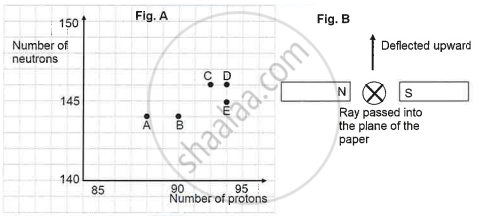Advertisements
Advertisements
प्रश्न
The front face of a circular wire carrying current behaves like a north pole. The direction of current in this face of circular wire is:
(a) clockwise
(b) downwards
(c) anticlockwise
(d) upwards
उत्तर
anticlockwise
Because anticlockwise flow of current induces north polarity.
APPEARS IN
संबंधित प्रश्न
State whether the following statement is true or false:
The magnetic field inside a long circular coil carrying current well be parallel straight lines.
What is the shape of a current-carrying conductor whose magnetic field pattern resembles that of a bar magnet?
Draw a sketch to show the magnetic lines of force due to a current-carrying straight conductor.
The diagram given below represents magnetic field caused by a current-carrying conductor which is:

(a) a long straight wire
(b) a circular coil
(c) a solenoid
(d) a short straight wire
The magnetic field associated with a current-carrying straight conductor is in anticlockwise direction. If the conductor was held along the east-west direction, what will be the direction of current through it? Name and state the rule applied to determine the direction of current?
State condition when magnitude of force on a current carrying conductor placed in a magnetic field is zero?
Differentiate between Conductors and insulators.
What do you know about Michael Faraday?
Which of the following pattern correctly describes the magnetic field around a long straight wire carrying current?
|
The graph (fig A) illustrates the correlation between the number of protons (x-axis) and the number of neutrons (y-axis) for elements A, B, C, D, and E in the periodic table. These elements are denoted by the letters rather than their conventional symbols. When the element C, depicted in the graph, undergoes radioactive decay, it releases radioactive rays. When these rays are directed into the plane of the paper in the presence of a magnetic field, as indicated in the fig B, they experience deflection, causing them to move upwards.
|
Name the law used to identify the radioactive radiation emitted by the element.

